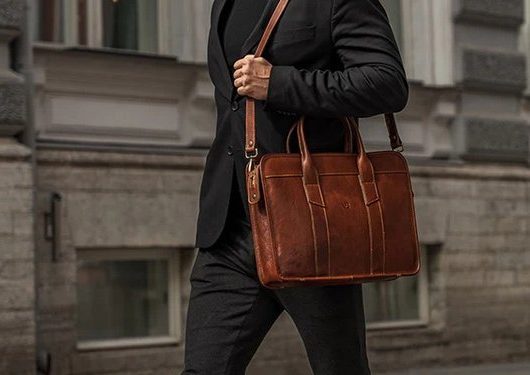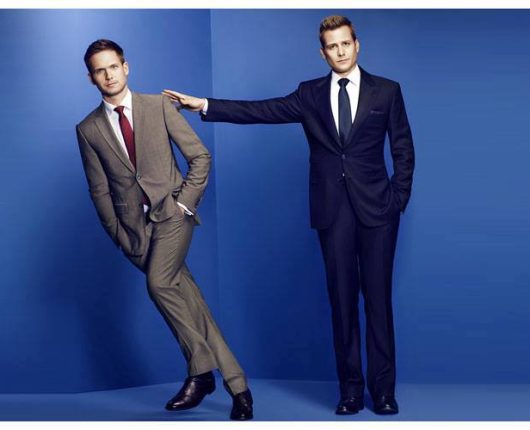The world of men’s suits is nuanced and varied, providing a kaleidoscope of options that can suit (pun absolutely intended) a variety of occasions, body types, and idiosyncratic styles. Delve into the subtleties—from understanding the stark difference between single-breasted and double-breasted ensembles to the undeniable importance of fabric selection and impeccable fit. Choosing the right suit transcends mere aesthetic appeal; it’s an art form, a statement, and a way to present your most polished self to the world. Equip yourself with this comprehensive guide, and you’re not just choosing a suit—you’re investing in style, comfort, and unadulterated elegance, irrespective of the occasion. Whether you’re navigating the labyrinthine world of menswear as a novice or you’re a seasoned sartorial veteran, consider this to guide your compass on a journey toward impeccable tailoring. Does all these apply to women’s suits? Basically not. And now that I know everything about the type of suits, how can I decide when to wear each?
What Kind of Suit to Wear to Which Occasion
OK, so now, how do I choose? Let us guide you
1. What’s the Occasion?
- Formal or Black-Tie Events: Consider a Tuxedo or Morning Suit.
- Business/Work: Go for a Business Suit in conservative colors. Single-breasted suits with notch lapels are popular. Learn how to rule your business attire with Harvey Specter.
- Casual Outing: Casual suits or Lounge Suits are apt. Linen or cotton suits work well for a relaxed look.
- Travel: Travel Suits, wrinkle-resistant and functional, are your best friends.
2. Which Region’s Style Appeals to You?
- Elegant and Slim: Italian Suit.
- Classic and Refined: British Suit.
- Comfortable and Practical: American Suit.
Curious about European vs American style? Check our post.
3. How Do You Prefer the Suit to Fit?
- Close to the Body: Slim Fit.
- Traditional Silhouette: Classic Fit.
- Balanced: Modern Fit.
- Roomy and Comfortable: Relaxed Fit.
4. What’s Your Climate or Season?
- Warm and Humid: Summer Suit in light fabrics like linen or lightweight cotton.
- Cold and Chilly: Winter Suit made of heavier wools or blends.
5. Which Fabric Appeals to You?
- Soft and Luxurious: Wool varieties like Merino, Cashmere, or blends.
- Light and Airy: Cotton or Linen.
- Shiny and Unique: Velvet or Silk.
- Budget-friendly: Synthetic materials or blends.
6. How Much Are You Willing to Invest?
- Budget-Friendly: Off-the-Rack.
- Mid-Range with Personalized Fit: Made-to-Measure.
- High-End Customization: Bespoke.
7. How Do You Like Your Jacket Detailed?
- Buttons: One for a modern look, two for versatility, three for tradition, and four for a unique stance.
- Lapels: Notch for every day, Peak for formality, Shawl for tuxedos.
- Vents: None for a clean look, Center for tradition, Side Vents for easy movement.
8. How About Those Trousers?
- Clean Line: Flat Front.
- Traditional Look: Pleated.
- Finishing Touch: Decide between Cuffed vs. Non-Cuffed based on style preference.
Choosing the Right Suit Based on the Occasion
Beach Wedding
Embrace the seaside ambiance in a breezy, sun-kissed linen suit that whispers laid-back elegance. Heavy fabrics and dark shades are mere party poopers here, where the ocean breeze demands lightness and grace.

- Standard Choice: Linen Suit (light colors like beige, light blue, or grey)
- Optional: Lightweight Cotton Suit
- No-go: Heavy Wool Suits, Double-Breasted Suits
Corporate Business Meeting
In the realm of high stakes and firm handshakes, a sharp, meticulously tailored single-breasted suit speaks volumes. Opt for understated sophistication in navy or charcoal—loud patterns and casual attire need not apply.
- Standard Choice: Single-breasted suit (navy, charcoal, or black)
- Optional: Three-piece suit for added formality
- No-go: Bold colors or patterns, Casual fabrics like linen or cotton
Cocktail Party
As twilight beckons, slip into a sleek, slim-fit suit, with a touch of midnight velvet if you dare. This is where sophistication meets fun, leaving the tuxedo for more ceremonious affairs and the linens for sunnier days.
- Standard Choice: Slim Fit Suit in darker colors (navy, dark grey)
- Optional: Velvet Blazer for a touch of luxury
- No-go: Tuxedos (too formal), Overly casual suits (e.g., linen)
Job Interview
First impressions are paramount, so don a polished, classic suit in navy or charcoal. It’s the armor for success, where pinstripes can whisper ambition, but flashy colors scream caution.
- Standard Choice: Classic Fit Suit (navy or charcoal)
- Optional: Subtle patterned suit (like pinstripes)
- No-go: Flashy colors, Casual suits (like linen or seersucker)
Black Tie Event
A time-honored tuxedo becomes your ticket to a world of glamour and sophistication. It’s where the classic reigns supreme, sidelining the everyday business suit for a dance with timeless elegance.
- Standard Choice: Tuxedo
- Optional: Dinner jacket with black trousers
- No-go: Business suits, Light-colored suits
Outdoor Summer Event
Navigate the heat with feather-light linen or cotton, a sartorial oasis in the scorching summer. Dark, heat-absorbing colors and heavy wools are banished, for comfort reigns supreme under the sun.
- Standard Choice: Lightweight Linen or Cotton Suit
- Optional: Seersucker Suit
- No-go: Heavy wool suits, Dark colors that absorb heat
Winter Formal Event
Wrap yourself in the warm embrace of a cozy, heavier wool suit, where tweed can add a dash of character. The chill commands respect for warmth, leaving behind the whispers of linen and the hues of summer.
- Standard Choice: Wool Suit (heavier weight)
- Optional: Tweed Suit for added texture
- No-go: Light fabrics like linen, Light colors
Casual Business Environment
Stride through the office in a relaxed fit suit, a nod to professionalism with a whisper of ease. Here, the tuxedo is too grand, and the three-piece suit too stern, for the language of casual business speaks in softer tones.
- Standard Choice: Relaxed Fit Suit (subtle colors)
- Optional: Blazer with chinos or dress pants
- No-go: Tuxedos, Very formal three-piece suits
Gallery Opening or Creative Event
Let your ensemble be your canvas at a creative soirée, with a modern fit suit in unique hues or patterns. Traditional business attire fades into the background, making way for expressions of individuality and flair.
- Standard Choice: Modern Fit Suit with a unique color or pattern
- Optional: Stylish blazer with smart casual trousers
- No-go: Overly formal suits, Traditional business suits
Day at the Races
Stand out in the grandstand in a dapper morning suit or a tastefully classic ensemble, accented with a bold tie or pocket square. Casual wear and unstructured suits are left at the gate, for this is a parade of finesse and tradition.
- Standard Choice: Morning Suit (if very formal) or Classic Suit
- Optional: Bold tie or pocket square
- No-go: Casual wear, Unstructured suits
Date Night
Charm your evening in a soft-shouldered Italian suit, where casual meets chic. It’s the perfect blend for romance under the stars, leaving the stiff formals for boardroom battles and tuxedos for the ballroom.
- Standard Choice: Casual suit (like a soft shoulder Italian suit)
- Optional: Stylish sports coat with jeans for a more relaxed look
- No-go: Overly formal business suits, Tuxedos
Graduation Ceremony
Mark the milestone in a smart, modern fit suit, a beacon of your journey ahead. The day calls for a balance between formal and casual, leaving behind the extremes for a celebration of achievement.
- Standard Choice: Slim or Modern Fit Suit (navy, grey) or Tuxedo. Check our prom suits.
- Optional: Blazer and dress pants
- No-go: Very casual or overly formal attire
Religious Ceremony
Step into the sacred with a timeless, conservative suit, where respect and tradition weave through every thread. It’s a moment for understated elegance, setting aside the flamboyance for a serene homage to solemnity.
- Standard Choice: Conservative Suit (classic colors like navy or grey)
- Optional: Three-piece suit for added formality
- No-go: Flashy colors, Casual suits
Networking Event
Navigate the mingle with a business-casual ensemble, smart yet approachable. It’s the dance of professionalism with a hint of ease, where full formal suits and casual flair watch from the sidelines.
- Standard Choice: Business Casual Suit (not too formal)
- Optional: Smart blazer with dress pants
- No-go: Full formal suits, Casual or flashy attire
Final Tips:
- Always prioritize comfort. No matter how good a suit looks, if you’re not comfortable, it’s not the right one.
- Ensure you have the basics first, like a classic navy or charcoal suit, before venturing into more unique options.
- Always get your suits tailored, even off-the-rack ones, for that perfect fit.

Grey pure wool suit with a pocket square and fabric by Loro Piana

Guabello mid blue super 120s Pure wool Suit

Iron grey lurex wide lapel Suit

Blue rope stripes limited edition Suit

Frequently Asked Questions (FAQs) about Types of Suits
- What is the main difference between Single-Breasted and Double-Breasted suits?
- Single-breasted suits have one set of buttons and a narrow overlap of material, whereas double-breasted suits have a wider overlap and two parallel sets of buttons.
- Why are there so many fabric options for suits?
- Different fabrics offer varying textures, weights, and appearances. They also influence a suit’s comfort, breathability, and suitability for different occasions and climates.
- How do I know which fit is right for me?
- It depends on your body type and comfort preference. Slim fit is tailored closer to the body, classic fit offers a traditional silhouette, modern fit is a balance between slim and classic, and relaxed fit provides more room.
- What determines the type of lapel on a suit?
- The lapel style often aligns with the suit’s formality level and personal preference. Notch lapels are versatile, peak lapels are more formal, and shawl lapels are typically found on tuxedos.
- Why do some suits have vents while others don’t?
- Vents aid in movement and drape. The choice between no vent, center vent, or side vents depends on style preference and the desired silhouette.
- How does construction affect the quality of a suit?
- Bespoke suits are custom-made, offering the best fit. Made-to-measure are adjusted based on standard sizes, while off-the-rack suits come in predetermined sizes. Generally, bespoke suits are of the highest quality, followed by made-to-measure, and then off-the-rack.
- Is the number of buttons on a suit just a style preference?
- Largely, yes. Two-button suits are the most common. The number of buttons can affect the suit’s formality and how it elongates the torso.
- Why would I choose a special type of suit like a Nehru or Tuxedo?
- Special types cater to specific occasions, cultural influences, or style preferences. Tuxedos are for formal events, while a Nehru suit offers a unique cultural touch.
- What’s the difference between British, Italian, and American suits?
- These styles have regional variations in fit, material, and design. British suits are structured, Italian suits lean towards a slim fit with soft shoulders, and American suits are traditionally more relaxed.
- Why are there seasonal variations in suits?
- Seasonal variations ensure comfort and appropriateness. Summer suits are lightweight for hot climates, while winter suits are made from heavier fabrics for warmth.
- What are the benefits of different pocket styles?
- Different pocket styles offer both functionality and aesthetics. Flap pockets are versatile, jetted pockets offer a sleek look, patch pockets add a casual touch, and ticket pockets, once functional for holding train tickets, now add a traditional flair.
- What does the canvas in a suit refer to?
- The canvas is an inner layer sewn into the jacket’s chest, providing structure and shape. A full canvas means the entire front side is canvassed, half canvas covers the chest and lapel, and fused means the suit uses adhesive to attach the fabric to the inner lining.
- Why might someone opt for a collarless or Mandarin suit?
- The Mandarin suit offers a clean, modern aesthetic. It can be a cultural choice or a fashion statement for those looking for a minimalist appearance without the traditional lapel.
- How does the trouser style affect the overall look of the suit?
- Flat-front trousers offer a modern, streamlined appearance. In contrast, pleated trousers can add a touch of traditional style and may offer more room for comfort. Cuffs add weight to the trouser hem, affecting drape and formality.
- Is there a difference between a travel suit and a regular suit?
- Travel suits are designed with frequent travelers in mind, often made with wrinkle-resistant fabrics and sometimes featuring multiple pockets for functionality.
- Why is velvet considered a suit fabric, and when is it appropriate to wear?
- Velvet, with its luxurious texture and sheen, is reserved for more opulent occasions like evening events or parties. It’s less traditional but makes a bold style statement.
- Are there rules for matching suit fabrics with seasons?
- Traditionally, lighter fabrics like linen are favored in the summer, while heavier wool or flannel suits are preferred in colder months. However, modern fashion often bends these rules for style or comfort.
- Why are some suits described by their region, like Italian or British?
- Regional designations often refer to the traditional tailoring styles and preferences of that area. For instance, British suits might be more structured with a stiffer construction, while Italian suits emphasize a softer silhouette and lightweight construction.
- What occasions call for a morning suit?
- Morning suits are traditionally worn for daytime formal events, especially weddings, royal events, or horse racing outings in some cultures.
- Is there a difference in maintenance or care between different suit types?
- Generally, suits require similar care regardless of type. However, certain fabrics might have specific care instructions. For instance, velvet suits may need special attention to maintain their sheen, while wool suits benefit from occasional brushing.
credit: Salva/ hockery.com





